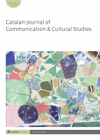
Full text loading...

This study explores the relationship between social media influencers and the online identity of Egyptian youth. The context of this study is Egypt, a developing country in the Arab World which underwent a nation-changing revolution in 2011. Its youth, who represent around 60 per cent of the population, were one of the most impacted groups in the society. They are the heaviest users of social media and represent the biggest number of fans for influencers. The research question focuses on the relationship between social media influencers and the construction of the online identity of their youth fans. The research question is addressed through semi-structured in-depth interviews with nine social media influencers and eighteen of their fans. The analysis revealed that influencers play an indirect role in their fans online identity negotiation and construction.

Article metrics loading...

Full text loading...
References


Publication Date:
https://doi.org/10.1386/cjcs_00017_1 Published content will be available immediately after check-out or when it is released in case of a pre-order. Please make sure to be logged in to see all available purchase options.